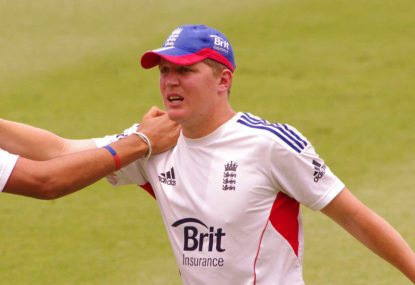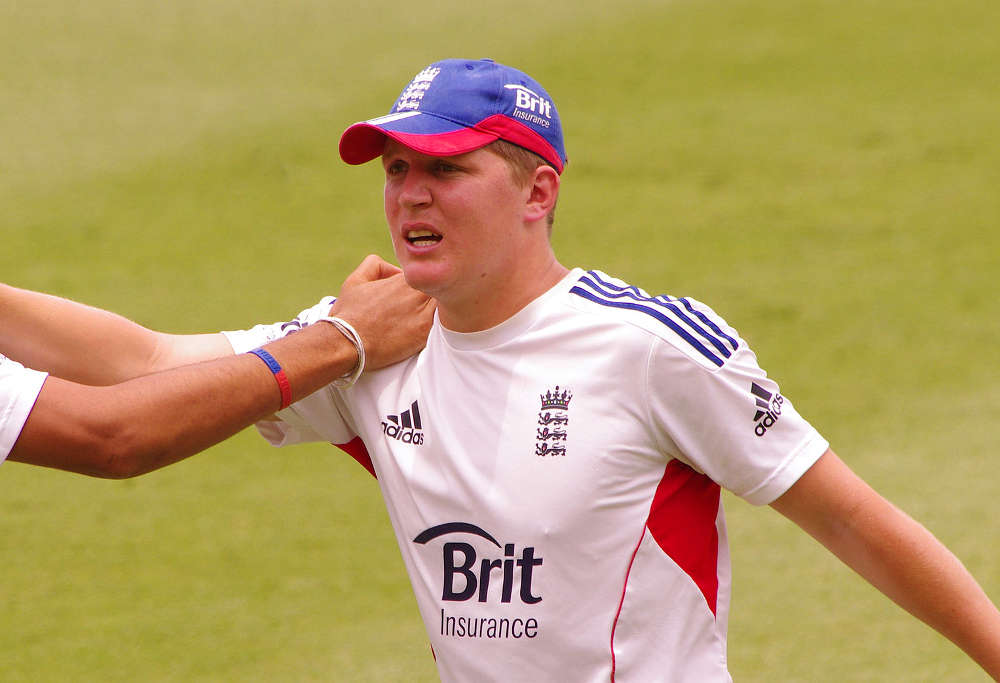'Off his foot': Ashton Turner falls to one of the unluckiest caught and bowled dismissals
The Aussie's dismissal summed up Lucknow's night, losing to Kolkata Knight Riders by 98 runs.

“You can’t bat for toffee” a South African gentleman once told me in a club cricket match. At least I think it was toffee.
The mind is apt to play tricks, so it may have been some other kind of confectionary or maybe not confectionary at all, and something altogether earthier. The thought struck me at the time that this was a slightly unfair and subjective statement.
It’s all about the context and comparison of course. Compared to Brian Lara, Sachin Tendulkar and Ricky Ponting – the chosen players are consistent with the chronology of the event – this would indeed be a fair statement.
However, compared to my protagonist’s 87-year old grandmother or 9-year old nephew I would like to think that I would be positively Lara-esque. The only fair comparison would really be between myself and my accuser, which from memory I would rate as no more than a score – draw. Or perhaps more accurately, to use the old Football pools parlance, a no-score draw.
So, why am I sharing with you long forgotten club cricket anecdotes? Well I must confess it is all about Gary Ballance. You know, the one that sometimes plays for England and can’t bat for toffee! Anyone that has observed his travails in Bangladesh would have witnessed his stationary, single figure scoring and arrived at the conclusion that he is “un-selectable”.

This is a mantle that his teammate and fellow bench-warmer Stephen Finn is equally used to. Every tortured innings appears to be the very model of nervous indecision and inhibition. And, what tools does Ballance have at his disposal to weather a change in fortune and a return to form?
A defensive technique and two or three shots drawn straight from Cricket’s book of mechanics. Not for Ballance the leant into and caressed carpet skimming cover drive. Instead, his limitations favour the punched drive the square cut, and the tip around the corner.
Ballance is one of cricket’s shovel wielding tradesman. An altogether cruel irony considering that he is an old Harrovian. When, like Ballance, you lack the innate ability to deliver the games aesthetics then the only currency in which you can pay out is runs. When the “run” currency dries up your position plummets with all the restraint and control of the Zimbabwe Dollar.
Gary Ballance is after all the man that you employ to paint your fence and not your portrait. He is judged only by the efficiency of his work and his value for money. A value measured in runs and not crowd pleasing charm or finesse. No broad brush aesthetics or artistic indulgences are handed to him. He is judged on average alone and usually even that only in the context of his last three or four innings.
It is easy to forget that Ballance holds a Test average just a shade below 40. The magic number that separates the ordinary from the proper Test batsman. Even easier still to forget that he was the third fastest Englishman to 1,000 test runs. He stands in the bronze medal position behind two Yorkshire legends, namely Sir Leonard Hutton and Herbert Sutcliffe.
Each time Ballance has been dropped it has been deservedly so. But resolutely he has been brought back in again with little of the old deficiencies seeming to have been addressed. The short ball continues to be an unsolvable conundrum. The full pitched delivery has now propelled itself into his consciousness as another noisy area or fear and doubt. Either as a subtext of his well-documented problems against the bouncer or directly as a result of that heavy legged, back foot technique.
Where batsman like Ballance are concerned the fans sometimes have less patience than the selectors. Giving so few glimpses of art, style, improvisation or glamour they are apt to quickly tire of his pedestrian paced low scoring when it offers up so few tangible benefits. Following in the footsteps of Jonathan Trott, his runs are only remembered and fully acknowledged when they cease to be provided.
Such is the lot for a man hired merely for efficient and effective action. His scores are best read in the newspaper than witnessed at first-hand. At the exact moment that he fails to deliver we begin to question his presence. He provides no glimpses of better days or unfulfilled skills ripe for harnessing and development.
He is the machine that once it malfunctions is no longer fit for purpose. To make matters worse, by all accounts, the machine steadfastly refuses to be fixed. Determined to rely upon his old tried and tested programming he remains fixed and rooted to his back-in-the-crease system of trench warfare. Faith in the tried and tested is in some ways commendable and has its merits.
It is in tune with the current commentator and coaching mantra of “trusting your technique” and “believing in your ability”. But, the time comes, when unless someone is supremely gifted, that they reach the threshold of their talents and the maximum that can be achieved. Only with change, evaluation, reassessment and innovation can individuals continue to improve and become greater than the sum of their parts.
Gary Ballance can “bat for toffee”. He will never be Lara or Tendulkar or Ponting. He can bat well for Yorkshire and England. His average of 39.25 is testament to that. He just needs to remember how and to remember it soon. Although, I have a feeling it may already be too late.
Realistically he will only play in India in the unlikely event of an injury. Or if England flat line in the remaining matches and Ben Duckett fails to make runs. Then a chance may appear but probably not until the 5th Test. Should it come he needs to accept it with both hands. The platform and the conditions exist to dig in and bat long.
But maybe he is just one of the last of the Mohicans. A fading image of Cricket’s pre 20/20 yesteryear. A reminder of a time when the game was washed down with Best Bitter rather than intravenous hits of Vodka Red Bull.
Perhaps, he is the wrong man to be in today’s entertainment business. Instead, the gritty old attritional Yorkshire world of George Hirst, Wilfred Rhodes and Emmett Robinson might have suited him better. But, for those of us that love the jagged edges and nuances of the long game we hope not.